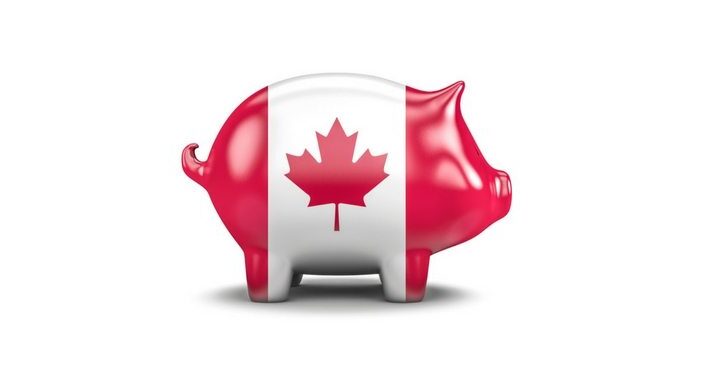How Does the Tax-Free Savings Account (TFSA) Work?
TurboTax Canada
February 11, 2025 | 5 Min Read
Updated for tax year 2025

What if you have some money you’d like to invest tax-free but don’t want to wait until retirement to access it? In Canada, you open a tax-free savings account!
Much like it sounds, a tax-free savings account (TFSA) is a nontaxable account that helps Canadian taxpayers save for major life events or purchases without paying taxes on the income they earn from investments they make in the account.
But here’s the account’s greatest benefit: you also don’t have to pay taxes on the money you take out of a TFSA, like you would with a registered retirement savings plan (RRSP). Sound interesting? Before you run to your bank to open a tax-free savings account and begin contributing to it, here are a few things to know.
Key Takeaways
- A tax-free savings account (TFSA) is a nontaxable account that helps you save for short-, medium-, or long-term financial goals.
- Any Canadian resident 18 years or older with a valid social insurance number (SIN) can open a TFSA.
- The TFSA limit is $7,000 for 2026 and remains the same as $7,000 for 2025.
What is a TFSA?
A tax-free savings account is a registered account that offers Canadians a flexible way to save money. Introduced in 2009, it works like this: any money that is deposited in a TFSA is able to grow tax-free, including any interest and capital gains earned through the account. Income earned is both exempt from personal tax during the year the gains are generated and also when the money is withdrawn.
Any Canadian resident who is at least 18 years old and has a valid social insurance number (SIN) can open a TFSA and contribute to it. When you turn 18, you begin to accumulate contribution room that carries forward—even if you don’t immediately start contributing. The amount that you’re able to contribute every year is set by the government and indexed to inflation.
Is a TFSA worth it?
Wondering whether the TFSA is worth it compared to other savings accounts like the RRSP? Let’s break down the TFSA’s benefits and drawbacks.
- Everyone can contribute: You don’t need earned income to make contributions to your TFSA. Anyone over the age of 18 can make the same contribution, whether they made $0 or $1,000,000.
- Grows tax-free: A TFSA can grow via investments without being taxed.
- You can take money out of your TFSA: You can use a TFSA to save for short-, medium-, or long-term financial goals since you’re able to take money out of your TFSA at any time. That gives you more flexibility!
- You aren’t taxed on withdrawals: With a TFSA, it doesn’t matter how much your savings grow over the years you’re making withdrawals; you pay zero taxes on anything you take out. That’s one of the best TFSA benefits.
- No tax deductions for TFSAs: Despite all those great TFSA benefits, there is one key downside. Contributing to an RRSP offers a tax deduction in the form of a reduction in net income, whereas contributing to a TFSA does not provide a tax deduction.
How does a TFSA work?
A TFSA works by providing all Canadians a maximum amount they can contribute to their TFSA. This is referred to as the TFSA “contribution room,” and accumulates starting the year they turn 18—rolling over in years when contributions aren’t maxed out. Any contribution made to a TFSA during a calendar year counts toward contribution room, except for direct transfers from one TFSA to another. But don’t overdo it: over-contributions to a TFSA (that is, contributions exceeding the maximum amount allowable) are subject to a 1% penalty for each month the account’s contribution limit is exceeded.
Registered TFSA account holders are able to contribute only to their own TFSA accounts. That being said, if a spouse or child is not contributing the maximum to their respective TFSAs, you can give them the money to contribute to their accounts without the income being attributed to you. It is important to take into consideration that any investments given to children or to a spouse/common-law partner might incur taxable capital gains.
You’ll be able to contribute $7,000 in 2026. Don’t plan to contribute that much? Don’t worry—it will roll over to a future year when you can make a larger contribution. The limit also stays the same as $7,000 in 2025 and every January 1st, additional contribution room opens up.
A look back at previous TFSA contribution limits
Since the amount you can contribute to a TFSA rolls over when you don’t make contributions, the total room available in 2026 for someone who has never contributed and has been eligible for the TFSA is $109,000. That means you could contribute a lump sum of $109,000 if you suddenly came across that much money. The total room available in 2025 for the TFSA is $102,000.
What if you weren’t eligible in 2009? No problem. You can calculate your total contribution room available using these historical contribution limits.
- 2009 — $5,000
- 2010 — $5,000
- 2011 — $5,000
- 2012 — $5,000
- 2013 — $5,500
- 2014 — $5,500
- 2015 — $10,000
- 2016 — $5,500
- 2017 — $5,500
- 2018 — $5,500
- 2019 — $6,000
- 2020 — $6,000
- 2021 — $6,000
- 2022 — $6,000
- 2023 — $6,500
- 2024 — $7,000
- 2025 — $7,000
- 2026 — $7000
How to find out your TFSA limit
There are a couple of ways to determine your TFSA limit.
- If you turned 18 after 2009, check out the maximum annual TFSA contributions above or on the CRA site. Then, add together the maximum contributions from the year you turned 18 or first got a social insurance number (SIN) up to the present. If you took a withdrawal from your TFSA in the previous year, add that amount as well. Subtract the sum of all prior years’ contributions from that figure. That number is your current maximum contribution.
- Log in to the CRA My Account from your computer, or use the MyCRA app from your smartphone, and find the information there. Here’s how to do just that:
- Go to CRA My Account and log in.
- Under the tabbed header, navigate to RRSP and TFSA.
- Click Tax-Free Savings Account (TFSA).
- Click Contribution Room.
- Click Next at the disclaimer. Look for your TFSA contribution room on the first day of the present year.
- This value is your most accurate contribution room. Any contributions or withdrawals made during the present year will not be included in this number.
- Call the CRA’s Tax Information Phone Service (TIPS), at 1-800-267-6999. Before you call, make sure you have all the authentication documents.
How to withdraw from a TFSA
Wondering about tax-free savings account withdrawal rules? The good news is that they’re very flexible—that’s one of the core TFSA benefits.
- You can withdraw as much as you want from a TFSA at any time.
- If you make a withdrawal, there is no deadline by which you have to pay the money back.
- Your contribution room increases according to the amount you withdraw. For example, let’s say you put the full $109,000 in contribution room into your TFSA. Over the year, you make great investments and grow that amount to $150,000. Then you decide to take out the full value of your TFSA as a down payment on a house. In the future, you can put $150,000 back into your TFSA.
- You don’t pay any tax on your withdrawals. That money is 100% yours.
How many TFSA accounts can you have?
You can have as many TFSA accounts as you like! That said, the amount you contribute across all those TFSA accounts can’t be more than your available TFSA contribution room for that year.
File with confidence
Get advice and answers as you go, with a final tax expert review before you file.
Get StartedRelated articles

© 1997-2024 Intuit, Inc. All rights reserved. Intuit, QuickBooks, QB, TurboTax, Profile, and Mint are registered trademarks of Intuit Inc. Terms and conditions, features, support, pricing, and service options subject to change without notice.
Copyright © Intuit Canada ULC, 2024. All rights reserved.
The views expressed on this site are intended to provide generalized financial information designed to educate a broad segment of the public; it does not give personalized tax, investment, legal, or other business and professional advice. Before taking any action, you should always seek the assistance of a professional who knows your particular situation for advice on taxes, your investments, the law, or any other business and professional matters that affect you and/or your business.









